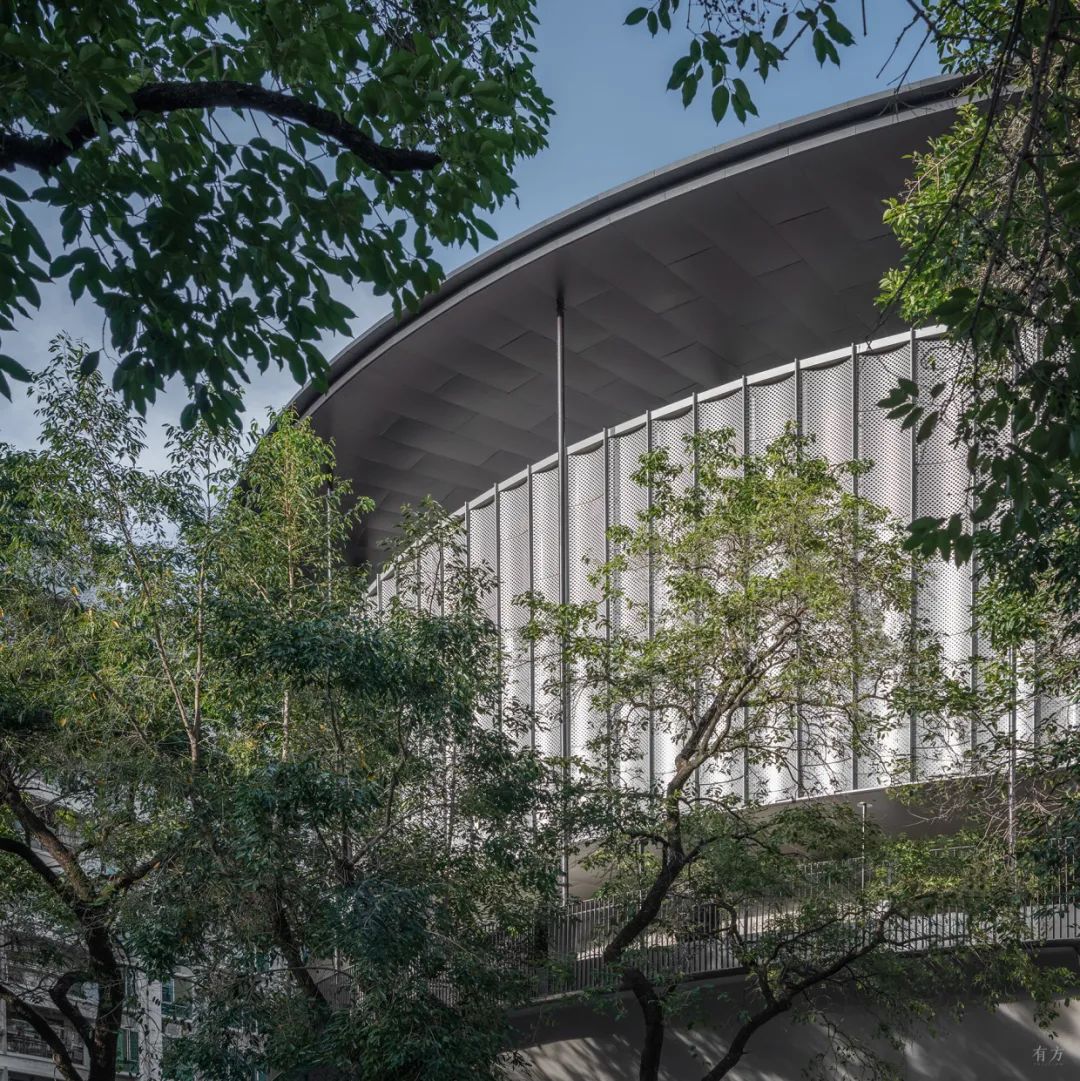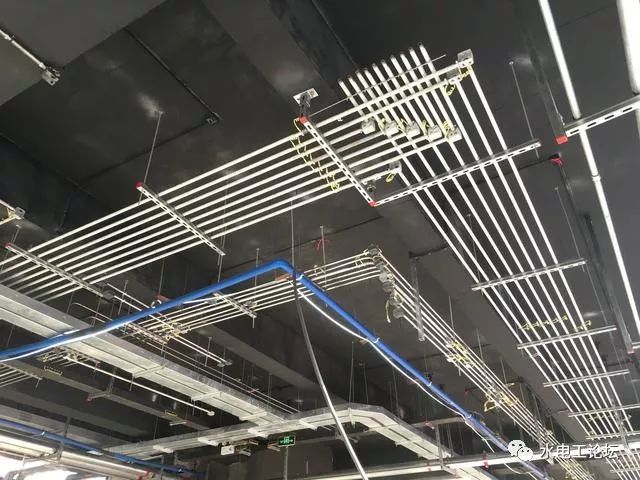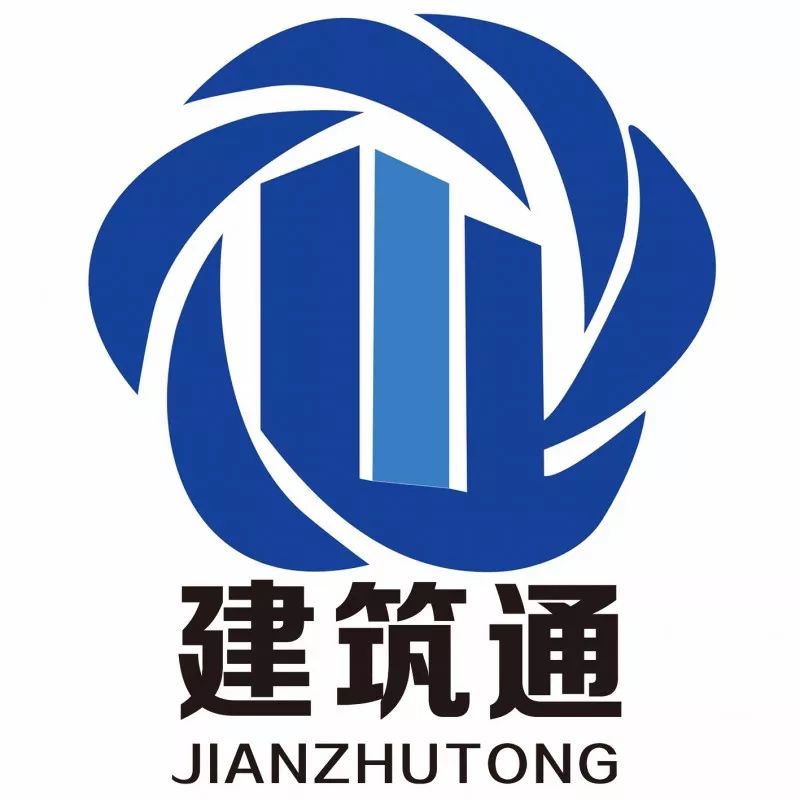The construction period is from May 2019 to now.

DreamWorks, located in Futian District, is a precious legacy left by our predecessors in this young city.
△ vegetation and street interface © Hill buildings △ the “rocks” under the trees © In the 18 years since the construction of the fast-growing city dream workshop, the expansion of urban density has never stopped, and the surrounding urban environment has also experienced sudden changes.

△ density of DreamWorks and surrounding cities © Hill building △ residential area across the street © Behind the miracle of the expansion of this fast-growing city, Hill architecture is also accompanied by the reality that local planning lags behind the construction behavior, which inevitably leads to dislocation in the density and attribute control of urban space.



Today, in a high-rise block, a semi outdoor lightweight roof truss stands on a base with a bowl shaped outline.
△ from the corner of the city to the reconstructed DreamWorks © Guo Jing △ appearance of metal curtain wall in the morning © Guo Jing architectural design , Qiu Architectural Design Office (Lantau architecture + LAN architecture) presided over the architect , Yu Dao (Lantau Architecture); The location of Cheng Bo and Li Bo (LAN construction) projects is Shenzhen, Guangdong.


The legacy of our predecessors, the dream workshop, and the dream workshop before the transformation were written by Cheng Zonghao.





The high-rise auxiliary building retreats at the street corner and integrates auxiliary rooms such as stage, classroom and office.







The geometric outline of the base, such as the bowl, and the dense trees on the site boundary define a square space with special quality.
Combing the overall situation of disorder is the initial entry point of the transformation strategy of DreamWorks.
In the cities in the “stock stage”, Let physical space re-establish reconciliation.




They formed a dense boundary to enclose the square, and the dream workshop like “mountains and stones” was hidden behind.



Cheng Zonghao was the first batch of pioneers to set foot in Shenzhen and the founder of the first batch of class a qualified design units in China.

Now, an urban public theater is located in the residential community 18 meters across the street, which can’t help asking questions.


Site conditions: at the time of the birth of this building, there was still a piece of land with sparse density around the site, and DreamWorks, who has reached the age of 18 this year, has witnessed the changes of urban structure in this area with its own life.
However, under the condition that the closed climate and sound boundary are just needed for transformation, the original organization mode of directly entering the theater stands from the city square is no longer established, and the level of the public interface between the city and the theater needs to be reorganized.


What needs to be transformed is not the single building, but the whole urban space connected with the single building.

The natural and artificial interfaces are intertwined and intertwined, which jointly depict the urban space.

The text of this paper is provided by the design unit.
△ large steps between main and auxiliary buildings © The “generous” attitude of DreamWorks towards the city before the reconstruction of Qiu architecture reminds us of the strategy of the Berlin National Art Museum..


Just like Roger Diener’s view on Urban Architecture: use a building in a base to create order; And the base, through some kind of autonomous building, to establish a greater reconciliation; Integrate all existing elements; The connection between architecture and base is that it strengthens its value and status with.
Standing at the highest point of the stand, you can have a panoramic view of the dense vegetation and urban landscape of the site.

A place for rain and dance in the square © The nature of Shenzhen was the first thing that touched us when we visited the tropical city} site of Qiu architecture.



In order to avoid the waste of urban public resources, the government decided to set up the “appearance improvement project of five cultural venues”, and DreamWorks also ushered in the moment of transformation.



In contrast to the street trees in the northern streets, which are often treated as “scenery”, the air in this tropical city is full of moisture and viscosity.



As a theater stand, the main building has an independent volume and retreats from the street corner to form a square at the corner.


△ theater stands before reconstruction © Hill architecture △ vegetation, city and grandstand © The hill building has no main building to maintain the structure, which makes its amazing bones directly exposed to the city in a nearly cross-sectional way.


△ main building of dream workshop: bowl body, vegetation and square © The special geometry of the bowl body of the hill building also gives citizens a spontaneous way to use it – the space like shading and rain shelter under the eaves, the square dance on time every night, and the top 50 most popular squares in Shenzhen are all favored by citizens for this special urban space.
Being able to take over the baton from our predecessors and continue to write the story of DreamWorks makes our “journey” full of a sense of mission after returning home four years ago.

The grandstand space can be understood as the extension of the public square.






The amazing bones of DreamWorks are hidden in a lush canopy, watching the street corners of the city.
I remember four years ago, when we first came to the site from the airport, we were shocked by the vigorous vitality of those vegetation.







02 transformation strategy # core issues # the core issues we face are not like the discussion of individual buildings in European cities under the stable urban order, but in the problems left over from the “incremental period” of cities, we use the opportunity of individual buildings to re-establish the site order and weaken the problems left over by the upper level planning.
△ building volume relationship before reconstruction © Hill building △ appearance before building reconstruction © The basic volume of the dream workshop of Qiu architecture is composed of a fan-shaped main building and a triangular auxiliary building.

Before the transformation of the urban open corridor, the two large steps between the primary and secondary volumes will direct the flow of people from the square to the semi outdoor grandstand.


He left a number of public cultural buildings with era memory in Shenzhen.

DreamWorks, originally a semi outdoor theater, was also complained about the disturbing sound during the performance and stopped operating for five years.


In terms of type, it is like the early “everyone’s music” stage in Shenzhen and a Greek theater.


The construction area is 7300 square meters.

The main building before the transformation is a semi outdoor theater without climate boundary.













